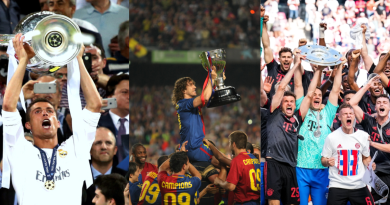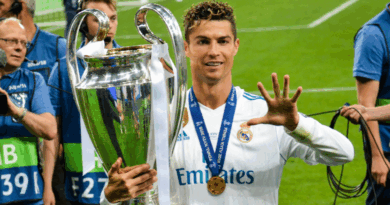La Liga salaries revealed: Full payroll breakdown for 14 top-flight clubs in 2025-2026
While the spotlight often shines on transfer fees and blockbuster signings, the real engine behind La Liga’s footballing machine is payroll. Behind every goal, every clean sheet, and every managerial meltdown is a weekly wage packet, and the numbers for the 2025, 2026 season reveal a fascinating financial landscape.
From global giants like Real Madrid and Barcelona to the underdogs quietly competing on a shoestring, every club in Spain’s top flight has a unique approach to budgeting its squad. Who invests the most in attack? Who bets on goalkeepers? And which clubs get the most bang for their buck?
This gallery takes you inside the wage structures of every La Liga team, in reverse order, from smallest to largest payroll, offering a position-by-position breakdown and insights into how each side is building for the season ahead.
Rayo Vallecano
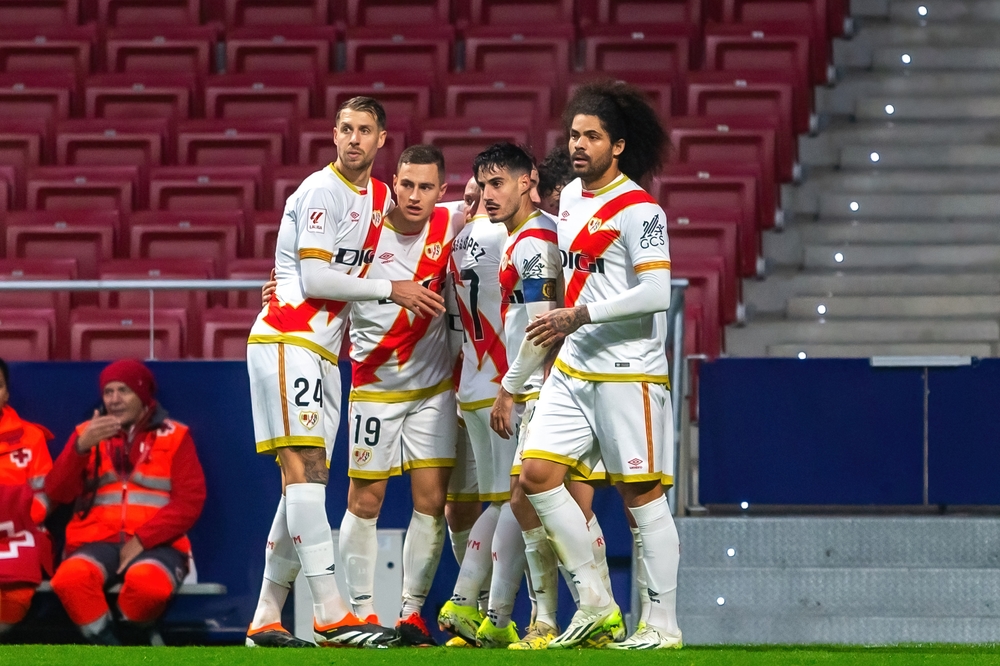
Rayo Vallecano enters the 2025, 2026 La Liga season with the lowest payroll in the league, totalling just €31.46 million annually, or roughly €605,000 per week. Despite sitting at the bottom of the wage table, the Madrid-based club has long been admired for its gritty underdog mentality and ability to punch above its financial weight.
Read also: Inside The 24 Most Valuable Football Clubs in the World
A closer look at how Rayo allocates its funds reveals a strong emphasis on the attack. The forward line receives the largest chunk of the budget at €11.36 million per year, which is over a third of their total payroll. This suggests that Rayo is investing heavily in players who can deliver goals, knowing full well that offensive firepower can often be the great equalizer in tight matches.
Their defenders follow with a total payroll of €10.84 million, while midfielders earn €6.56 million collectively. Goalkeepers round out the distribution at €2.7 million. While modest, these figures reflect a careful balance between positional needs and financial limits.
Rayo’s payroll strategy clearly leans toward building a dynamic, attacking team while maintaining a solid, if economically constrained, defensive structure. This could be seen as a tactical choice, opting for energy and flair up front, where individual moments can change a match.
Despite the limited budget, the club’s adjusted gross remains the same as its raw gross, indicating stable accounting with no inflation-related distortions. This suggests that Rayo is operating with financial clarity, even if the numbers remain modest by La Liga standards.
Read also: The 25 Most Expensive Departures in Bundesliga History - Ranked from Lowest to Highest
Ultimately, Rayo Vallecano’s wage sheet underscores a club that knows its place in the ecosystem but refuses to settle for mediocrity. They may not compete financially with the league's heavyweights, but they continue to build a squad with purpose, identity, and a fighting spirit that often belies their payroll ranking.
Getafe

Just above Rayo on the payroll table, Getafe’s 2025, 2026 wage bill stands at €34.39 million annually, roughly €661,000 per week. While not among La Liga’s big spenders, Getafe has carved out a reputation for being one of the league’s toughest teams to break down, often frustrating more expensive sides with their physical and disciplined approach.
Getafe’s budget allocation is fairly even across positions, but the highest-paid group is the midfield, at €9.46 million. This investment could reflect the club’s emphasis on transitional play and maintaining structure in the center of the pitch. Close behind are the forwards, earning €10.01 million, suggesting a balanced, two-way game plan.
Defenders are allocated €11.8 million, while keepers receive €3.12 million, which is in line with the overall modest approach. The relatively even spending across all areas of the pitch supports the idea of a squad built on collective effort rather than reliance on individual stars.
Read also: The 20 Longest-Serving Premier League Managers of All Time
Getafe’s payroll tells the story of a club that thrives on system over stardom. Rather than splashing out on marquee names, they focus their funds on role players who fit within a cohesive tactical framework. This aligns with the club’s on-pitch identity — gritty, organised, and hard to beat.
Their adjusted gross matches the raw payroll, signalling financial stability and predictability. While Getafe may not inspire headlines with transfer fees or wages, their consistency in Spain’s top division proves that results can be earned through smart spending and disciplined planning.
In a league where wage bills often dictate results, Getafe continues to prove that there's room for structure, identity, and resilience, even on a modest budget.
Mallorca
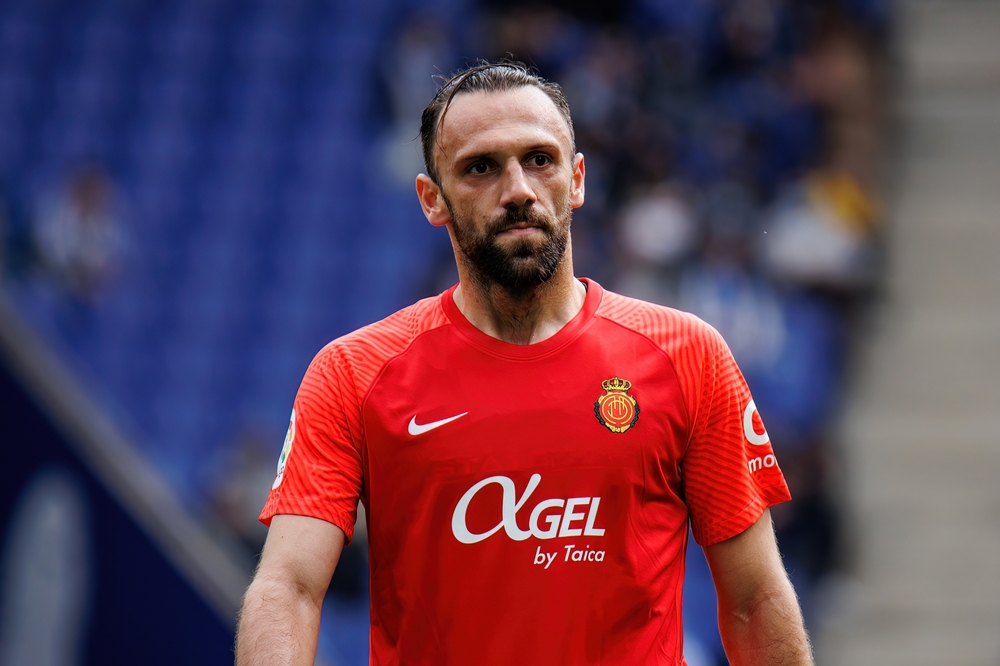
RCD Mallorca's payroll for the upcoming season is set at €34.96 million per year, with weekly wages of approximately €672,000. This places them among the league's lower-spending teams, yet they have managed to maintain their top-flight status with pragmatic football and targeted investments.
Read also: Most Champions League Goals in a Season by a Player - Ranked
The forward group receives the largest portion of the club’s wages, totalling €10.54 million, around 30% of the entire payroll. This investment suggests a focus on players who can deliver key moments, often in tight, low-scoring matches where clinical finishing becomes crucial.
The defense follows with €15.03 million in salaries, which represents nearly half the total budget. This heavy weighting suggests Mallorca prioritises a solid backline, a necessary foundation for a club often battling to stay clear of the relegation zone.
Midfielders earn €7.5 million, and goalkeepers just €1.89 million, which is among the lowest for any team in the league. This distribution implies a highly structured, defense-first approach, where midfielders act as a supporting cast and goalkeepers are likely homegrown or budget-conscious signings.
Mallorca’s wage strategy paints the picture of a club focused on survival. Rather than spreading resources evenly, they double down on the positions most critical to their tactical identity — defence and goalscoring. While their budget is tight, it is clearly aligned with a specific footballing philosophy.
Read also: The 30 F1 Drivers with the Most Wins - Ranked
Despite limited funds, the club’s financials remain steady, with adjusted gross matching the declared payroll. Mallorca may not dazzle, but their structure is clear, their intent is firm, and their spending reflects a team that knows exactly what it takes to stay competitive in La Liga’s bottom half.
Celta Vigo
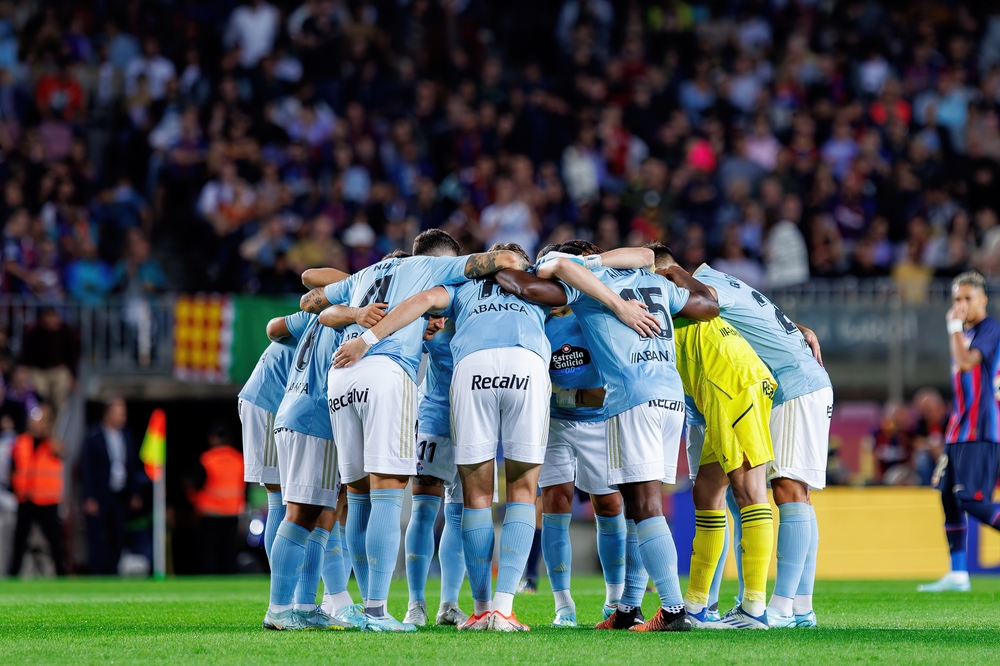
Celta Vigo enters the 2025, 2026 season with an annual payroll of €38.51 million, translating to approximately €740,000 in weekly wages. While this doesn’t place them among La Liga’s financial elites, the Galician club has long relied on technical ability and a strong youth system to remain a mainstay in Spain’s top flight.
Their biggest financial commitment goes to the forwards, who collectively earn €16.57 million, over 40% of the total payroll. This strong investment up front hints at a team looking to outscore its opponents rather than simply absorb pressure.
Defenders earn €13.45 million, showing that while attacking flair is prioritised, Celta has not ignored the backline. Midfielders bring in €5.25 million, while goalkeepers receive €3.24 million. The midfield figure is one of the lowest in the league, suggesting the club is either leaning on youth players or opting for more cost-effective midfield roles in a possession-based system.
Celta’s approach appears to revolve around technical, attacking play with strong contributions from wide forwards and overlapping full-backs. The financial structure backs this up — a team built to move quickly, create chances, and press with intent.
As with most lower-budget clubs, Celta Vigo’s adjusted gross matches their gross payroll, signalling clear, stable financial planning. They’ve chosen a tactical and economic path that emphasizes development and smart recruitment over high salaries.
For fans, this means a squad with less star power but plenty of personality — built around energy, pace, and tactical flexibility. While the payroll may not turn heads, the football often does.
Valencia
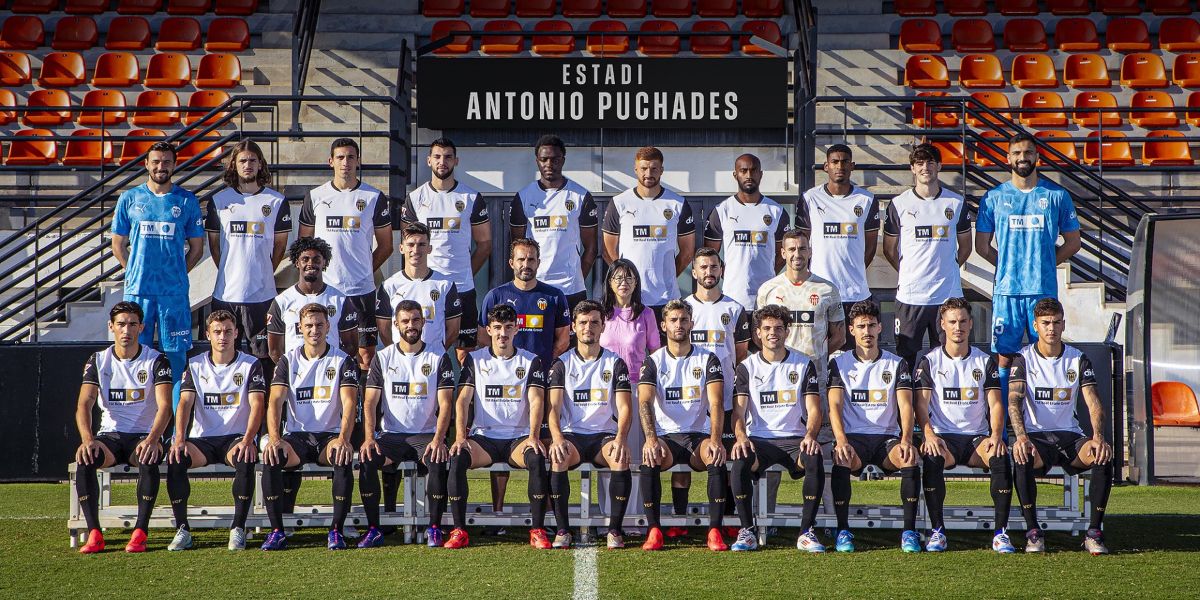
Valencia’s payroll for the 2025, 2026 season sits at €45.34 million annually, or €871,923 weekly. It’s a far cry from their heyday budgets, but the club is still managing to maintain top-flight consistency.
Most of the money goes toward forwards (€16.44 million), followed by defense (€16.22 million). Midfielders earn €8.32 million, while keepers are paid €4.36 million.
It’s a pragmatic distribution, suggesting Valencia is focused on scoring and defending rather than midfield control. That may reflect a more transitional, counter-attacking style under current management.
This wage structure supports the image of a squad built on resilience and flexibility, rather than individual brilliance. Valencia’s financial situation has stabilised in recent seasons, and the consistent wages across units suggest the club is planning for long-term sustainability.
Their adjusted gross remains equal to the raw payroll, indicating that all figures are inflation-accounted and up to date. It’s a tight ship — not glamorous, but functional — and it reflects a broader trend of restraint and rebuilding.
The payroll may not match the club’s historic stature, but it’s aligned with a new era of careful growth. Whether that will be enough to push Valencia back into Europe remains to be seen — but the foundation is solid.
Girona
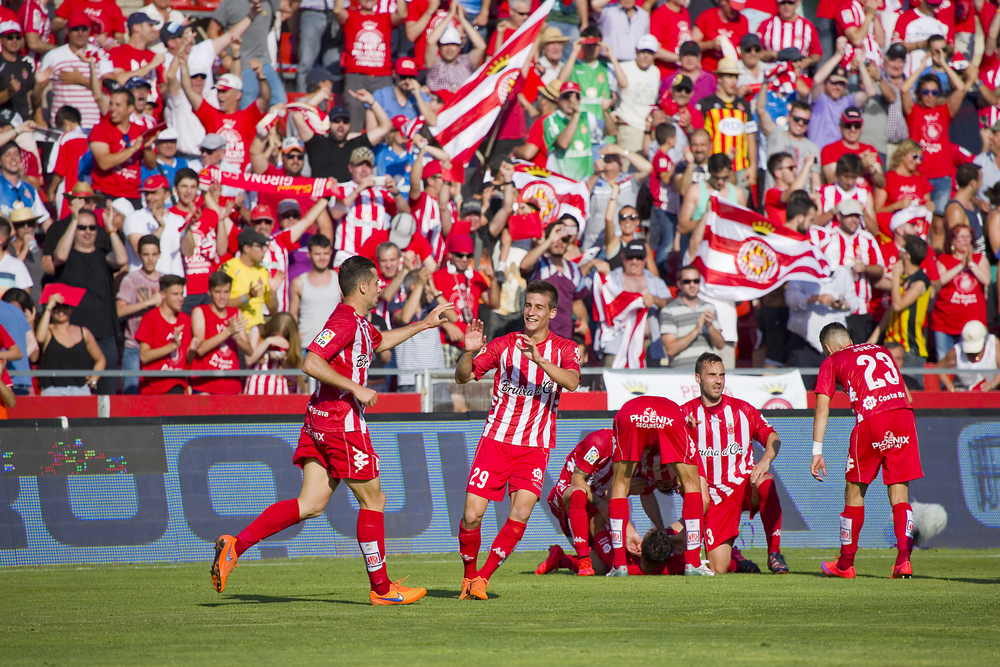
Girona’s remarkable rise continues with a payroll of €50.11 million in the 2025, 2026 season, breaking down to just under €964,000 per week. While still in the lower half of La Liga’s spending table, Girona has demonstrated how far smart financial management and tactical discipline can go.
The most significant investment goes into the forward line, which earns €19.31 million — nearly 40% of the total payroll. This indicates a clear focus on attacking play and highlights how Girona looks to win games rather than just survive them.
Defenders follow closely with €19.04 million, confirming the club’s commitment to a balanced game plan. The backline and frontline combined take up nearly 75% of the payroll, showing where Girona believes matches are won.
Midfielders earn just €6.25 million, and goalkeepers €5.5 million — figures that suggest either strategic cost-saving or a reliance on younger, less expensive talent in those roles.
Girona’s structure supports a high-tempo, end-to-end style of football. The even split between attack and defence mirrors their identity: aggressive in pressing, composed at the back, and willing to gamble in the final third.
Their adjusted gross is identical to the raw payroll, indicating financial transparency and inflation-adjusted clarity. It’s a well-run operation with a clear focus: keep building, keep climbing.
For a club that not long ago was outside the top flight, Girona’s ability to maintain performance while operating on a modest payroll is a testament to modern football intelligence. was outside the top flight, Girona’s ability to maintain performance while operating on a modest payroll is a testament to modern football intelligence.
Sevilla
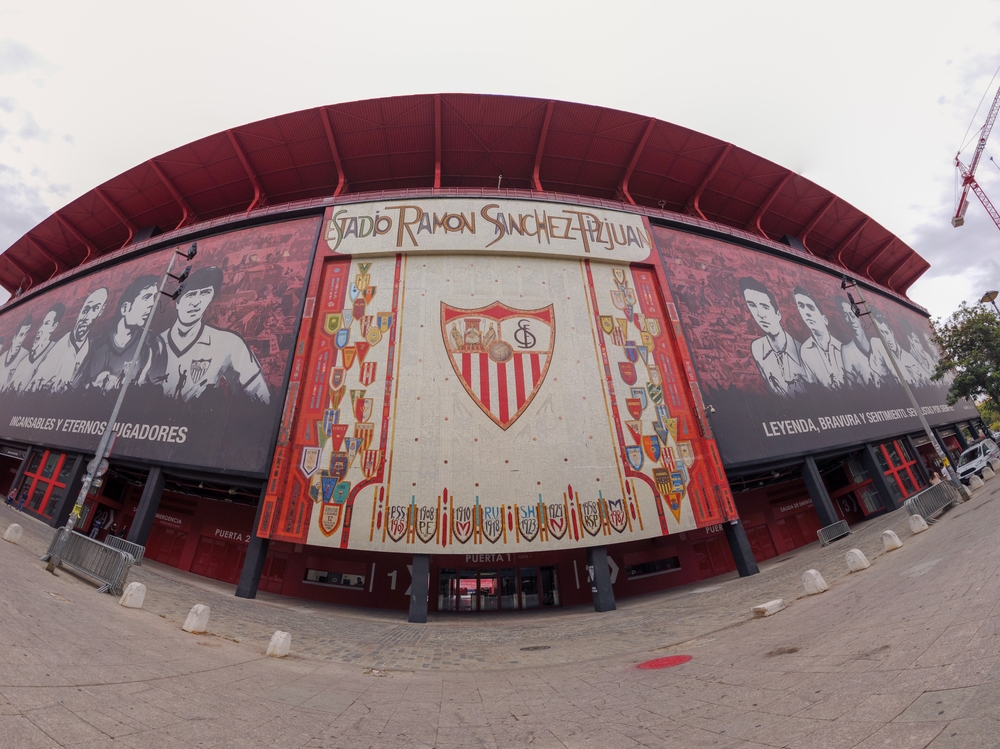
Sevilla’s gross payroll of €65.15 million is spread fairly evenly across positions, with a slight lean toward defense at €25.01 million. Their attackers earn €18.56 million, midfielders €16.27 million, and goalkeepers €5.31 million.
With weekly wages totalling €1.25 million, Sevilla continues its tradition of sustainable spending paired with competitive ambition. Their financial strategy leans on tactical depth rather than star power.
The numbers paint a picture of a team trying to stay in the European mix without overextending. Sevilla’s balanced payroll reflects stability, a key to navigating La Liga’s challenging landscape.
As with many La Liga clubs this season, Sevilla’s adjusted and raw payroll figures are identical, indicating no discrepancies due to inflation. The budget is controlled, consistent, and carefully apportioned.
Sevilla has long walked the line between ambition and sustainability. This season, their payroll suggests a renewed focus on the basics: defend well, stay organised, and capitalise when it matters. It may not be flashy, but it’s a formula that has brought them silverware in the past, and might yet again.
Real Sociedad

Real Sociedad’s 2025-2026 payroll clocks in at €66.18 million per year, or roughly €1.27 million per week, placing them in the same financial neighbourhood as Sevilla. Known for their emphasis on technical football and youth development, Sociedad continues to operate as one of La Liga’s most efficient clubs.
Unsurprisingly, the forwards are the highest earners at €30.98 million, nearly half the club’s total payroll. Sociedad clearly believes in investing in end product, trusting the rest of the team to supply and support attacking efforts.
Defenders earn €18.74 million, suggesting that while the forward line dominates, the backline is not neglected. Midfielders take home €12.06 million, and goalkeepers receive €4.4 million.
This distribution matches Sociedad’s playing style: fluid transitions from back to front, with technical defenders and mobile midfielders linking play to a potent front line. Rather than spending evenly, they invest where it counts, on the final touch.
Their adjusted gross mirrors the raw number, reflecting stable accounting and a clear budgetary plan. Real Sociedad’s wage approach supports their broader club philosophy, blending academy graduates with well-scouted signings to build a cohesive, effective unit.
As always, Sociedad is a club that trusts its process. The payroll may not be enormous, but it’s laser-focused. Their financial choices reflect a team with a long-term vision, one that could once again deliver European football without ever breaking the bank.
Villarreal
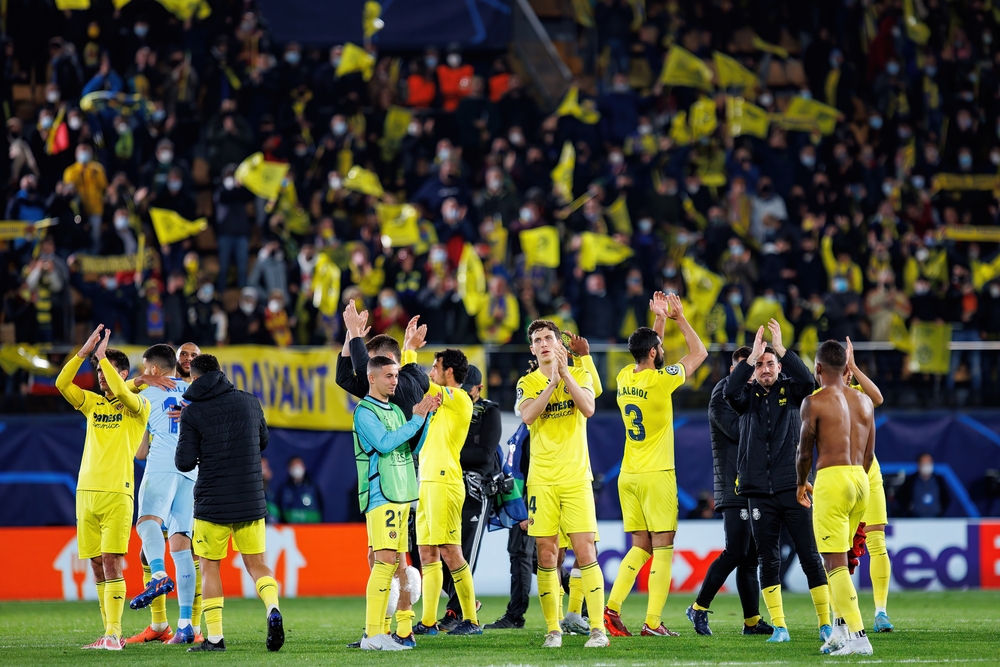
Villarreal’s payroll for the 2025-2026 season is set at €69.96 million, breaking down to roughly €1.35 million per week. While the club doesn’t compete financially with Spain’s giants, it has consistently remained one of La Liga’s most respected sides — known for sharp recruitment, tactical clarity, and European resilience.
The distribution of wages reveals a strategic focus on the wings and attacking third. Forwards are the top earners at €28.93 million — over 40% of the total payroll. This heavy investment in attackers underscores the club’s commitment to entertaining, proactive football.
Defenders follow with €22.28 million, suggesting the club isn’t ignoring the backline. Midfielders are paid €13.33 million, while goalkeepers receive €5.42 million — modest, yet stable figures that point to a well-rounded roster.
This structure supports Villarreal’s tactical identity: structured build-up, creative midfield link-up, and quick transitions to potent attacking players. The strong emphasis on both forwards and defenders shows they aim to dominate both ends of the pitch.
Notably, the payroll's adjusted gross equals its nominal value — a sign that Villarreal is operating within stable, inflation-adjusted financial parameters.
Unlike clubs that overspend to chase results, Villarreal’s measured approach prioritises consistency and sustainability. Their payroll may not be explosive, but it’s carefully engineered. In a league often dominated by giants, the Yellow Submarine continues to stay afloat — and thrive — through smart financial and football decisions.
Real Betis
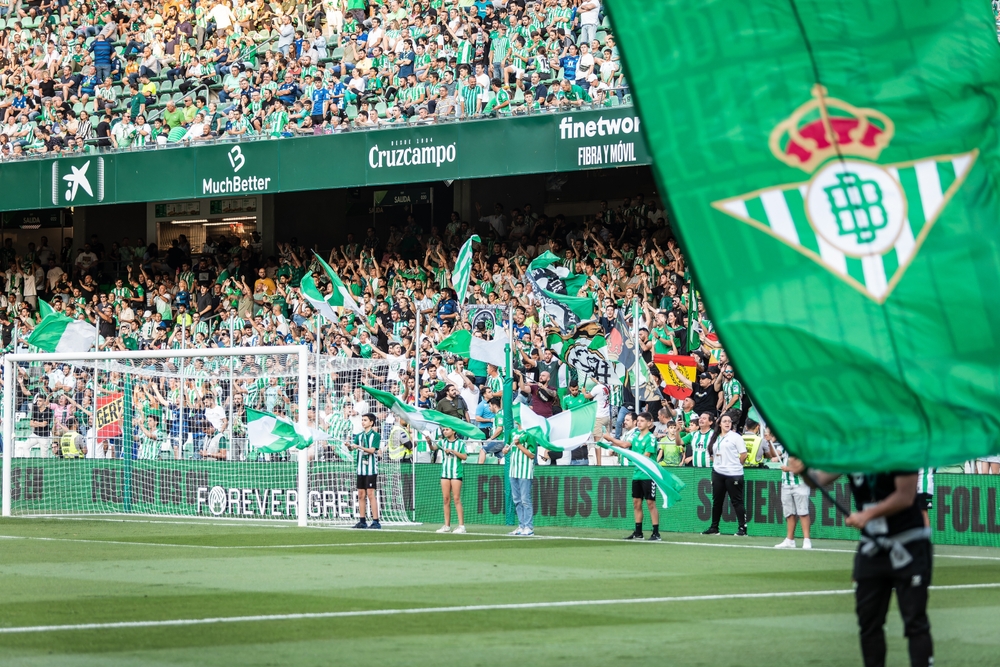
Real Betis’ wage bill for the 2025-2026 campaign stands at €75.99 million, translating to just over €1.46 million per week. In recent years, the Seville-based club has steadily climbed the ranks in both performance and payroll — and this season continues that upward trend.
The club spends the most on its forwards, who earn €32.06 million annually — a bold investment in goalscoring talent. This makes up nearly half the entire payroll, clearly indicating where Betis places its hopes for match-winning contributions.
Defenders are next in line, with salaries totalling €21.64 million. Midfielders receive €16.25 million, while goalkeepers bring in €6.04 million. The breakdown shows a club building from front to back — focused first on attack, then defence, and finally midfield control.
Such a structure makes sense for Betis, a side known for flowing football, creative link-up play, and attacking ambition. The balanced investment across midfield and defence reflects their effort to support a dynamic offensive unit without leaving gaps at the back.
Their adjusted gross mirrors the nominal figure, reinforcing the club’s stable financial planning. Betis are walking the fine line between ambition and sustainability, and their payroll structure supports that balance.
In short, this is a team that wants to entertain, compete, and qualify regularly for Europe — without gambling the future. With a payroll that rewards attacking output while maintaining squad balance, Real Betis looks primed for another strong season.
Athletic Club

Athletic Club, proudly rooted in its Basque-only player policy, manages to sustain a competitive payroll despite its self-imposed recruitment limitations. For the 2025-2026 season, their wage bill sits at €84.55 million, approximately €1.63 million per week.
The financial structure reveals a heavy commitment to their attacking corps, who receive €40.42 million, nearly half the total budget. This figure speaks volumes about the club’s trust in homegrown forwards and their ability to carry the team’s scoring burden.
The defence earns €28.19 million, also a significant portion, while midfielders take home €7.08 million. Goalkeepers earn €8.86 million, one of the higher figures for that position across La Liga, suggesting a deep investment in stability between the posts.
This distribution paints a picture of a club focused on strong fundamentals: a powerful front line, a solid back four, and a reliable goalkeeper. The midfield spend, while lower, may indicate that Athletic relies on tactical discipline and younger talents to fill central roles affordably.
Despite the unique limitations of their recruitment model, Athletic’s payroll demonstrates ambition, structure, and loyalty to their philosophy. The club’s adjusted gross equals the raw figure — a sign of well-managed finances that reflect reality without inflationary distortions.
Athletic Club continues to show that regional pride and top-tier football can go hand in hand. With a focused, well-paid core, the club aims not just to survive — but to challenge.
Atletico Madrid

Atletico Madrid ranks third in La Liga in payroll for the 2025-2026 season, with an annual spend of €157.29 million — approximately €3.02 million per week. That places them just behind Barcelona and well behind Real Madrid, but still among the elite in Spanish football.
The breakdown shows that forwards take the lion’s share of the wage bill, earning €62.04 million — nearly 40% of the total. This reflects Diego Simeone’s continued reliance on a strong attacking core, capable of delivering the goals that turn tight matches.
Defenders earn €44.99 million, while goalkeepers — at €24.16 million — command one of the highest salary totals in the league. This indicates that Atleti places high value on their last line of defence, possibly due to their emphasis on structure, pressing, and transitional solidity.
Midfielders receive a relatively modest €26.09 million, which is perhaps reflective of a system that relies more on work rate and positioning than flair in the middle of the park.
Atletico’s payroll structure perfectly matches its identity: gritty, tactical, and physically imposing. Every euro seems to be spent reinforcing that DNA — from a rock-solid keeper to a tireless backline and ruthless strikers.
Their inflation-adjusted gross equals the base figure, indicating consistent, stable financial reporting. While they no longer outspend their Catalan and Madrid rivals, they remain tactically and structurally sound — with a payroll to match.
In a league often obsessed with flair and aesthetics, Atletico continues to invest in intensity and resilience. Their payroll reflects not just ambition — but purpose.
Barcelona
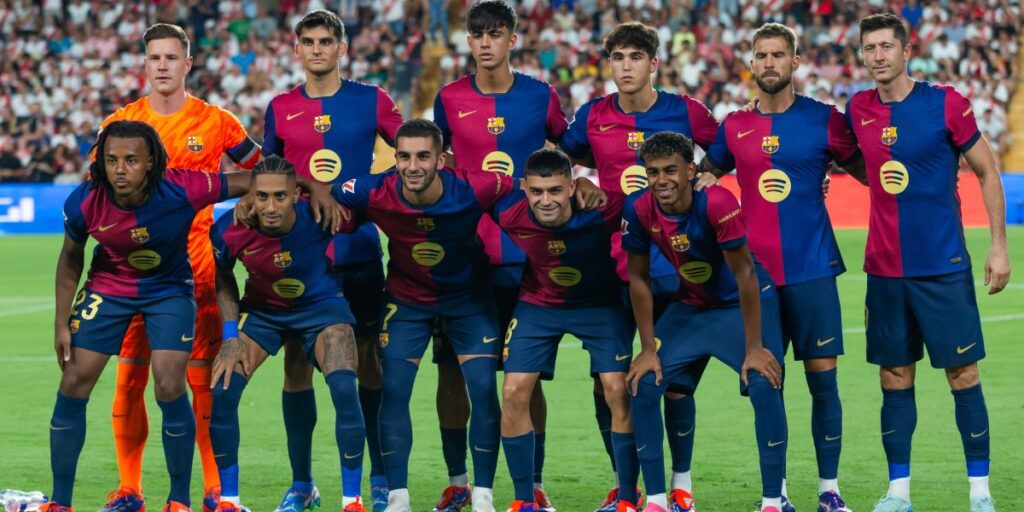
Barcelona’s payroll for the 2025-2026 season stands at €222.04 million, making them the second-highest spender in La Liga. Weekly, they shell out around €4.27 million in wages — a figure that reflects their ongoing push to remain competitive at home and in Europe, even as they navigate complex financial constraints.
Strikingly, the club invests the most in its goalkeepers, who earn €27.92 million the highest total for any club in that position. This suggests a deep belief in building from the back, with top-tier shot-stoppers seen as crucial to stability and success.
Up front, Barcelona spends €100.4 million — nearly half of the entire payroll — on forwards. That figure highlights a continued focus on attacking power and perhaps reflects both the cost and value of elite offensive talent in today’s market.
Defenders are paid €50.36 million, a significant amount that underscores the importance of solidity in a team still trying to find balance post-Messi. Midfielders, historically the club’s heartbeat, earn €43.36 million — not insignificant, but lower in comparison to past eras where midfielders were the top earners.
The payroll reveals a subtle shift in priorities. This is no longer the Barcelona of tiki-taka dominance through midfield control; rather, it’s a squad looking to break through with pace, individual brilliance, and well-organised defence.
Despite reduced transfer spending in recent years, Barcelona’s wage bill remains massive. The adjusted gross figure matches the raw total, showing that they’re keeping their financial reporting clear and inflation-proof.
Ultimately, this is a club still in transition — one foot in tradition, the other stepping into a new identity. And the payroll tells that story: expensive, forward-driven, and under pressure to deliver results worthy of the badge.
Real Madrid
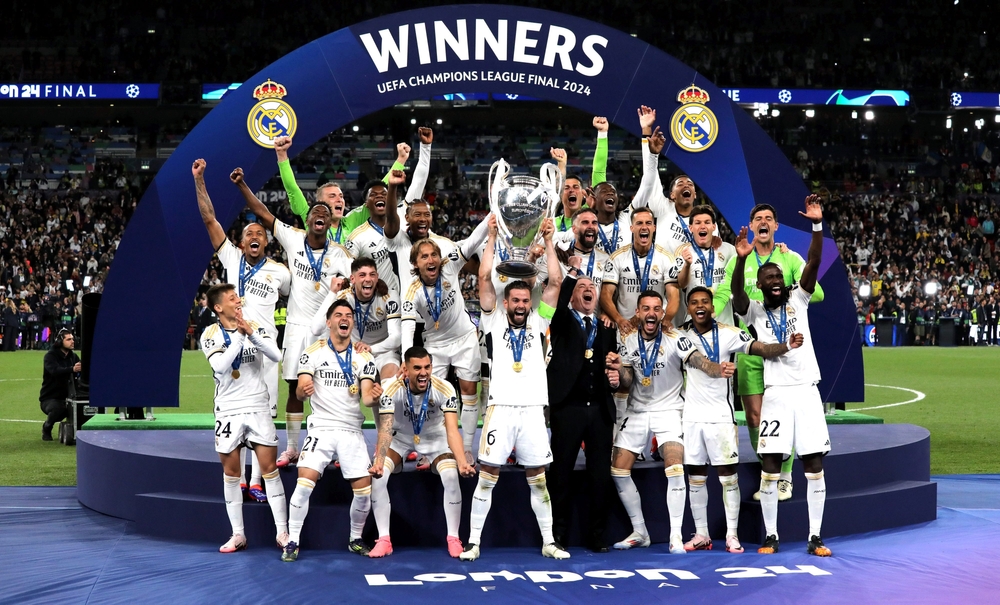
At the very top of the La Liga payroll table sits Real Madrid, with a monumental annual wage bill of €305.4 million, equivalent to €5.87 million every week. It’s a figure that dwarfs every other club in the league and cements Madrid’s status not just as a football powerhouse, but as a financial juggernaut.
No team in Spain, and few in Europe, invests so heavily across every position. Their defensive unit leads the way with €118.55 million in annual salaries, showing that Madrid is as serious about stopping goals as they are about scoring them.
Forwards come in just behind at €115.18 million, reflecting the club’s tradition of marquee attacking signings and reliance on match-winning firepower. Together, defence and attack account for nearly €234 million, a staggering concentration of elite-level wages.
Midfielders are paid €52.09 million, while goalkeepers receive €19.58 million, both figures that would eclipse entire squads in many other La Liga teams. This level of spending suggests not just depth, but quality in every area of the pitch.
There’s no inflation adjustment needed here, the adjusted gross is identical to the raw number. Real Madrid operates with clarity and scale, reflecting their confidence and clout in global football.
What makes their payroll especially notable is its balance. While the numbers are extreme, no unit is overlooked. It’s not just about star names, it’s about building a squad with two or even three top-class options in every position.
In the 2025-2026 season, Real Madrid’s wage sheet once again confirms the club’s unmatched ambition. From academy products to galácticos, every player is part of a well-funded machine engineered to win, domestically, continentally, and historically.


